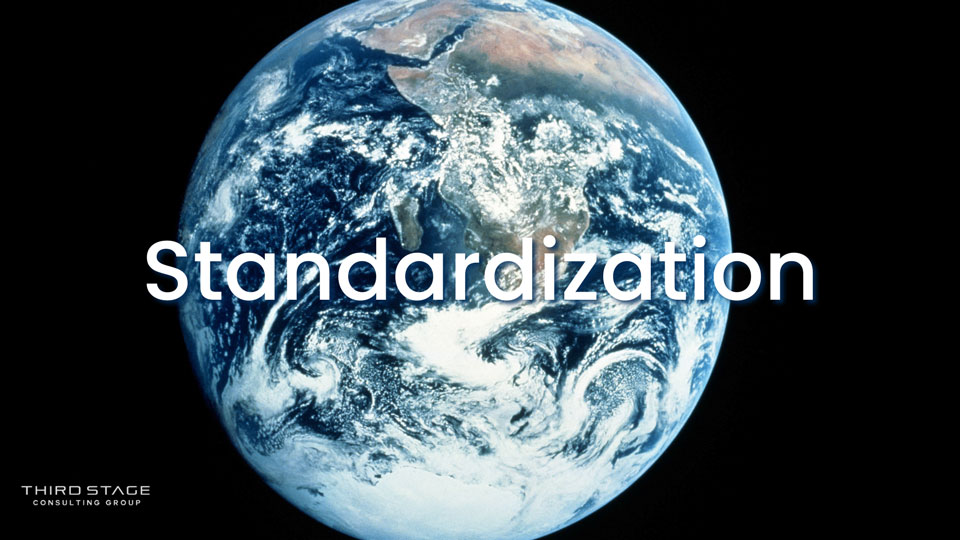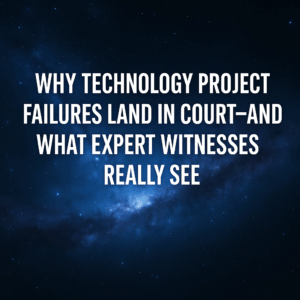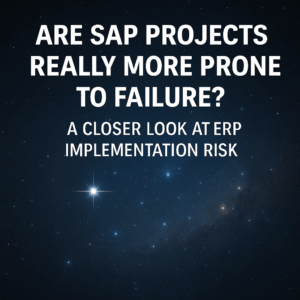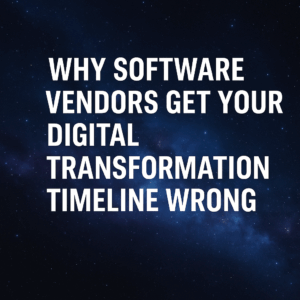Table of Contents
ToggleThe Appeal of Standardization
Organizations embarking on new ERP software implementations often set their sights on a compelling goal: standardizing business processes. The rationale behind standardization is straightforward—it promises increased efficiency, enhanced data integration, improved customer experiences, and ultimately, greater profitability. However, achieving this ideal scenario can be more complex than many organizations anticipate. Despite its clear benefits, the transition toward standardized processes requires thoughtful preparation, extensive analysis, and strong leadership.
Growth and Complexity
The drive for standardization usually emerges due to growth-driven complexities. Businesses naturally evolve over time—expanding into new markets, acquiring other companies, or diversifying product and service offerings. This expansion frequently results in varied operational processes, each tailored to specific circumstances, customer expectations, or regional requirements. Consequently, executives often face the challenge of managing numerous process exceptions rather than adhering to a unified operating model. Over time, these exceptions become entrenched, creating silos that impede efficient operation and accurate reporting. Standardization promises to simplify this complexity by creating uniform processes that can scale efficiently with the organization’s growth.
Vendor Promises and Reality
ERP software vendors often amplify the appeal of standardization by promoting built-in ‘best practices.’ While adopting these practices sounds attractive, reality frequently differs. The so-called best practices provided by vendors might not align perfectly with an organization’s unique operational needs or strategic objectives. Misalignment can lead to resistance and complications during implementation. Vendors tend to oversimplify the complexities involved, presenting an idealized vision rather than practical realities. Organizations must critically evaluate these claims, conduct thorough due diligence, and align their expectations realistically with their operational capacities and goals.
Why Standardization is Challenging
Deeply Embedded Processes
Achieving standardization involves significant complexity, primarily because it requires changing established, deeply ingrained business processes and behaviors. Employees accustomed to performing tasks in specific ways for years—or even decades—may resist transitioning to new processes. These routines become part of an organization’s culture, and changing them can feel disruptive or threatening. Furthermore, deeply embedded processes often exist due to practical or historical reasons that still hold relevance today. Addressing these requires careful analysis, effective communication, and patient change management.
Impact on Customer-facing Operations
Standardization can become even more challenging when it affects customer-facing operations. Adjustments in these areas may inadvertently impact service quality or responsiveness to customer needs, creating additional resistance and potential disruption. Customers accustomed to personalized services or region-specific practices may perceive standardized processes as rigid or impersonal. Organizations must carefully weigh the benefits of consistency against the need for flexibility in customer interactions, finding the right balance to avoid jeopardizing customer satisfaction and loyalty.
Strategies for Successful ERP Standardization
Phase Zero Planning
Organizations should adopt careful planning during the initial phase, known as Phase Zero. This step involves clearly identifying which processes should be standardized and which require customization. Typically, back-office operations lend themselves to standardization due to their repetitive and predictable nature. Conversely, customer-facing processes might need flexibility to effectively meet varied market demands. During Phase Zero, organizations should engage stakeholders across departments to build consensus, assess risks, and prioritize processes based on potential impact and feasibility. Thorough documentation and analysis at this stage lay a solid foundation for successful implementation.
Robust Organizational Change Management
Effective change management is crucial. Clear and consistent communication about the rationale, benefits, and implications of standardizing processes can significantly reduce employee resistance. Organizations should provide comprehensive training programs and ongoing support to ensure employees understand and adapt effectively to new processes. Additionally, identifying and empowering change champions within the organization can facilitate smoother transitions by advocating for the benefits of the new processes and providing peer-to-peer support. Regular feedback mechanisms should be established to address employee concerns promptly, ensuring continuous improvement and smoother adoption.
Realistic Resource Allocation
Organizations must realistically assess the trade-offs involved. While standardization drives substantial long-term benefits, it also introduces short-term risks such as extended project timelines, increased initial costs, and operational disruption. Adequate resource allocation, buffer timelines, and contingency plans are essential to mitigate these risks. Organizations should budget not only for technological costs but also for human resources required to manage change effectively. Additionally, organizations should maintain realistic expectations about project timelines, recognizing that delays may occur as teams navigate unexpected complexities or resistance during implementation.
https://www.thirdstage-consulting.com/contact-us/Conclusion: Balancing Benefits and Risks
The pursuit of process standardization through ERP implementation offers organizations a powerful pathway to operational excellence. Recognizing and proactively addressing inherent challenges significantly enhances the probability of successful transformation. With thoughtful planning, comprehensive stakeholder engagement, robust change management practices, and realistic expectations, organizations can effectively balance the benefits and risks associated with ERP standardization, positioning themselves to achieve sustainable improvements in efficiency and competitiveness.






